Here comes Santa…from the garden to the festivities
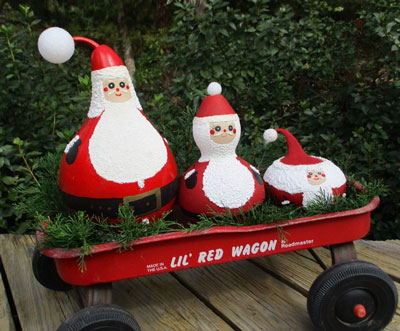
It’s hard to know when the first person looked at a hard-shell gourd, grabbed paint brushes or other crafting supplies, and transformed the woody-skinned fruit into the jolly, white-bearded holiday icon known as Santa. But the trend caught on!
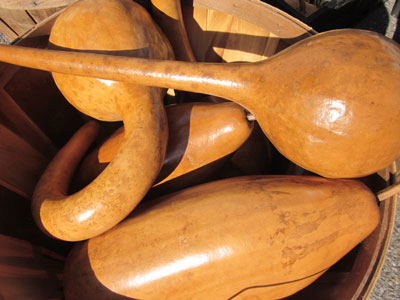
Today, creative-minded gardeners number among the folks who not only enjoy growing hard-shell gourds, but who enjoy decorating them, as well.
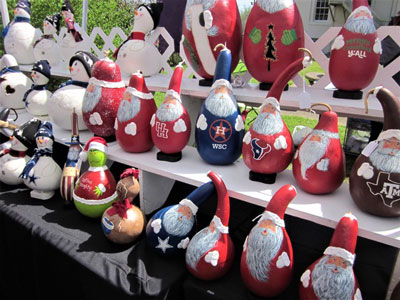
Sometimes referred to as the “gourds of history”, hard-shell gourds (Lagenaria) have a remarkable legacy: ancient Egyptians filled them with grain to store in pyramids; Daniel Boone’s grandfather kept eggs in gourd baskets; American pioneers stockpiled animal fat in bushel gourds; coastal Peruvian natives attached bottle gourd “floats” to fishing nets. From the dawn of history, civilizations have grown, cured, and used gourds as baskets, bird houses, bowls, boxes, tools, ladles, hats, musical instruments, dolls, and decorations.
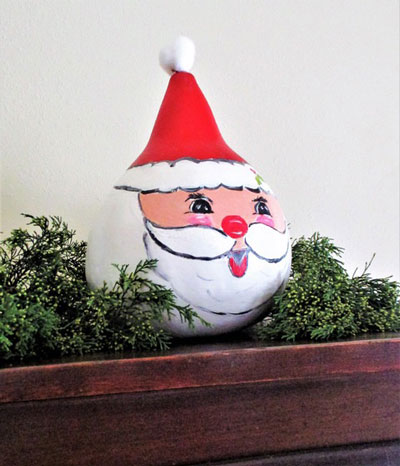
Whether your vision is to convert a hard-shell gourd into Santa, a Christmas tree topper, an ornament, or other object, the process starts in the garden in late spring…after the sun has coaxed the soil temperature to 60 degrees Fahrenheit. Gourds like sunny sites with well-drained, organically-enriched soil. Speed up germination by soaking the hard-coated seeds for up to 24 hours. Gourd varieties cross pollinate, so grow different varieties in separate areas.

To keep fruit healthy and blemish-free, provide a sturdy trellis or fence for the vigorous, fast-growing vines. If fruit rests on the ground, protect it from moisture and disease by slipping a board or a bed of clean hay underneath the fruit. Check it often. Support the heavy fruits of large gourds with a mesh sling tied to the fence. Hard-shell gourds require 110-130 days to mature on the vine. Water gourd plants regularly during the growing season.

After the vines wither and turn brown (hard-shell gourds tolerate frost) use sharp clippers to cut the gourds from the vines. Leave 2-6 inches of stem attached to each gourd. Avoid bruising or damaging the fruits as you hang them to dry in a well-ventilated location. Next, be patient. It can take up to six months for hard-shell gourds to cure. As they dry, it is natural for mold to form on the surface. When they are completely dry, briefly soak them in a mild chlorine bleach solution. Use a plastic scrubbing pad to gently scrub off the mold. Rinse, and let the gourds dry in the sun. Tip: Hard-shell gourds are cured if the seeds inside rattle when you shake the gourd.
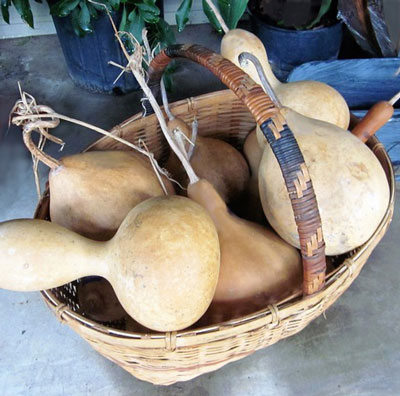
Although their wood-like, waterproof shell and interesting shapes fire the imagination year-round, many crafters look at gourds and visualize Santa or other holiday-themed objects. And with hard-shell gourds, that self-expression can be realized with acrylic paint, permanent markers, shoe polish, leather dye, and wood stain.
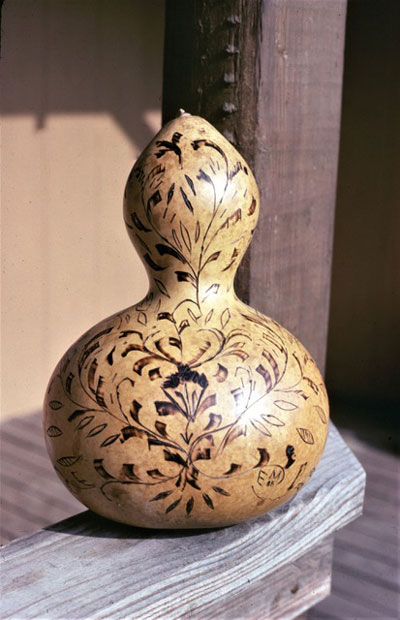
But with gourd art, painting, staining, and dying are just the beginning. You can embellish gourds with intricate patterns using wood-burning tools. You can carve designs through the shell using a knife or saw. You can express St. Nick in fabric using quilt scraps and decoupage finish.
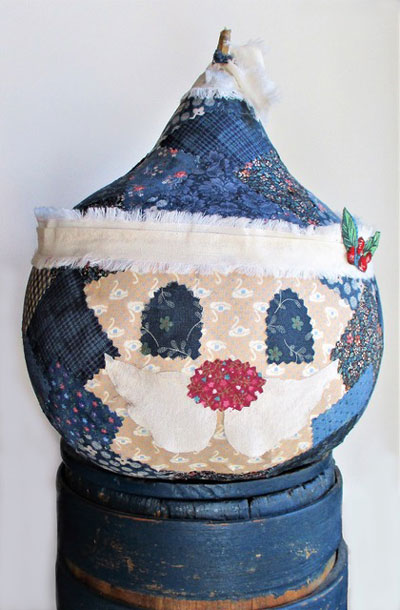
If you are a gardener, it’s not too early to start planning next year’s garden, and making decisions on which varieties of hard-shell gourds to grow.
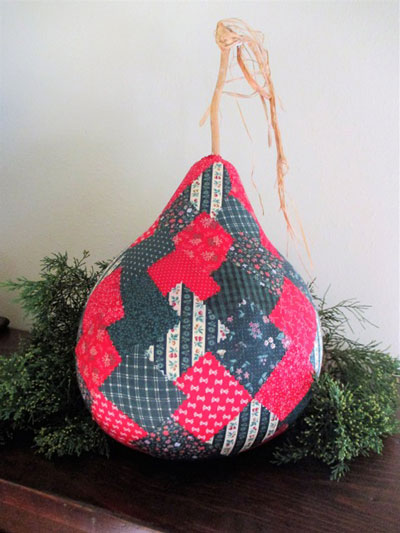
Better yet…there’s still time this holiday season to retrieve a cured gourd from a garden shed or a generous gourd-growing friend and craft a likeness of jolly St. Nick in your own “Santa workshop.”
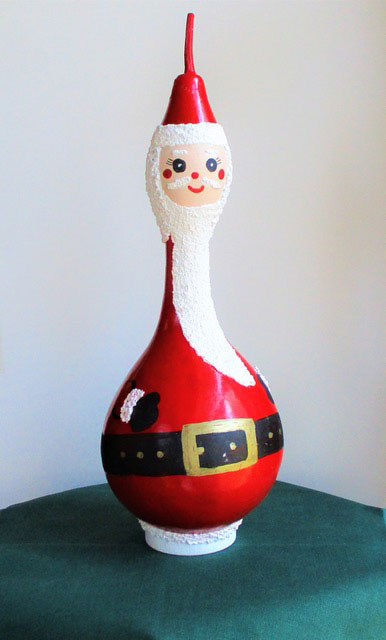
Gourds and Christmas…you bet!
